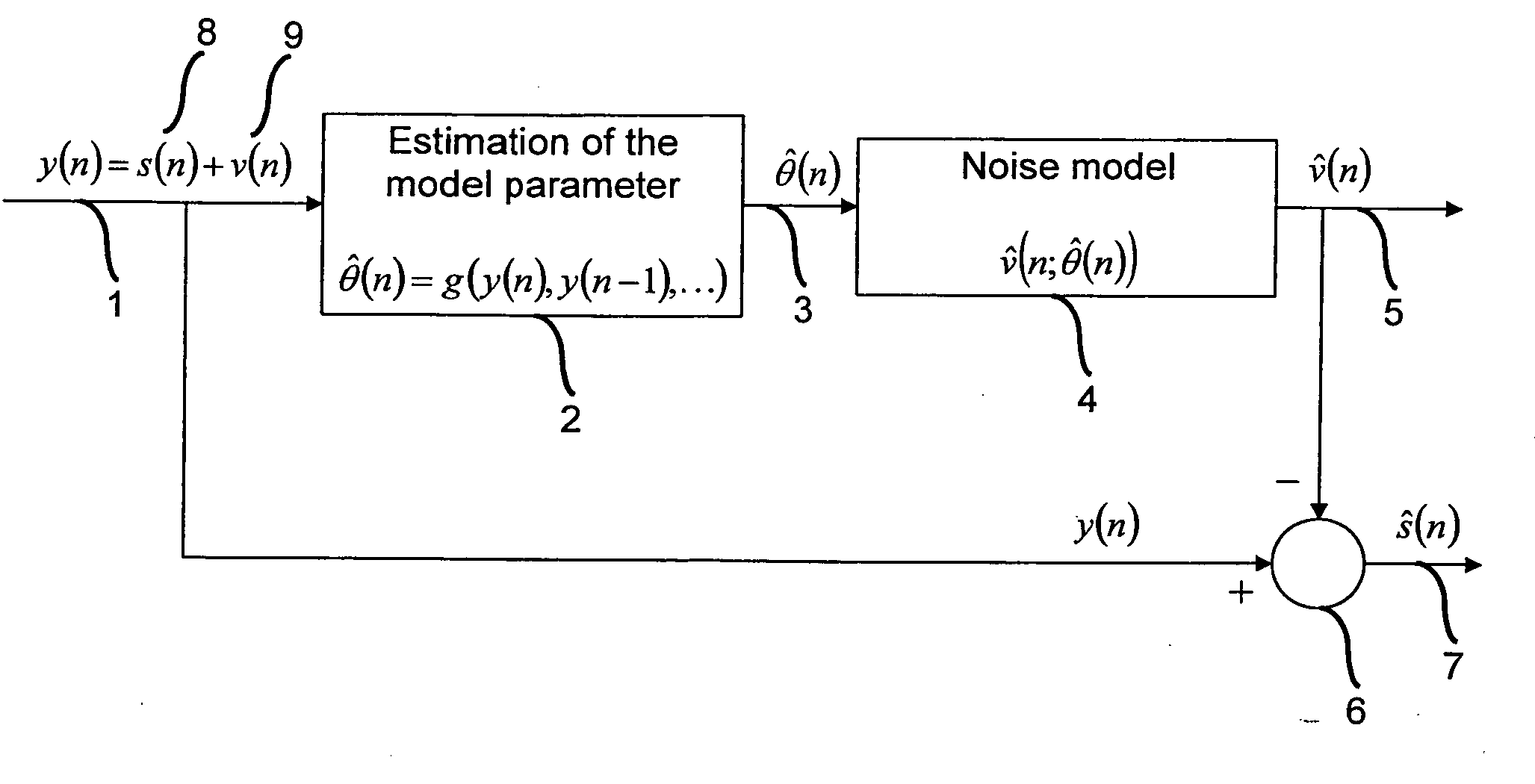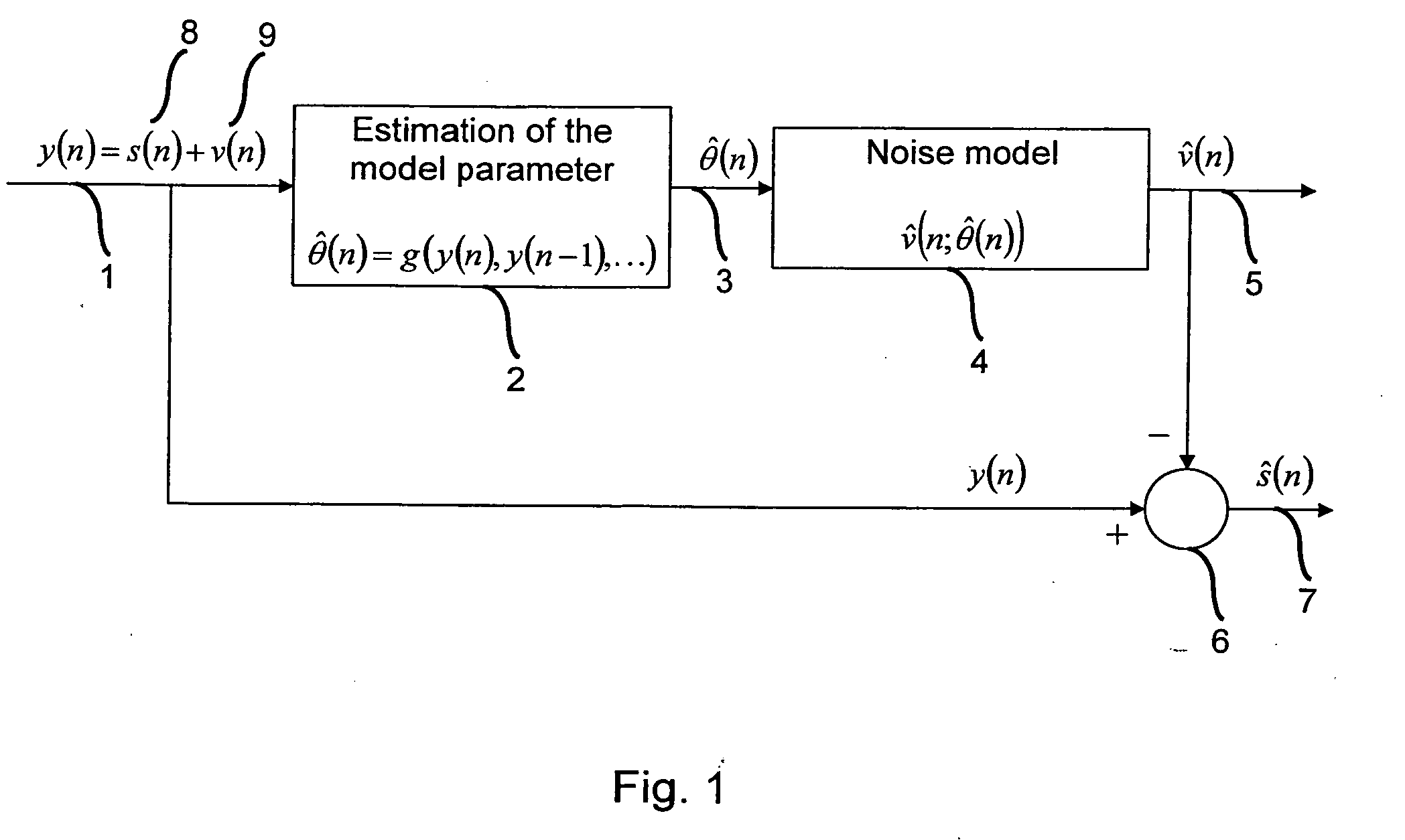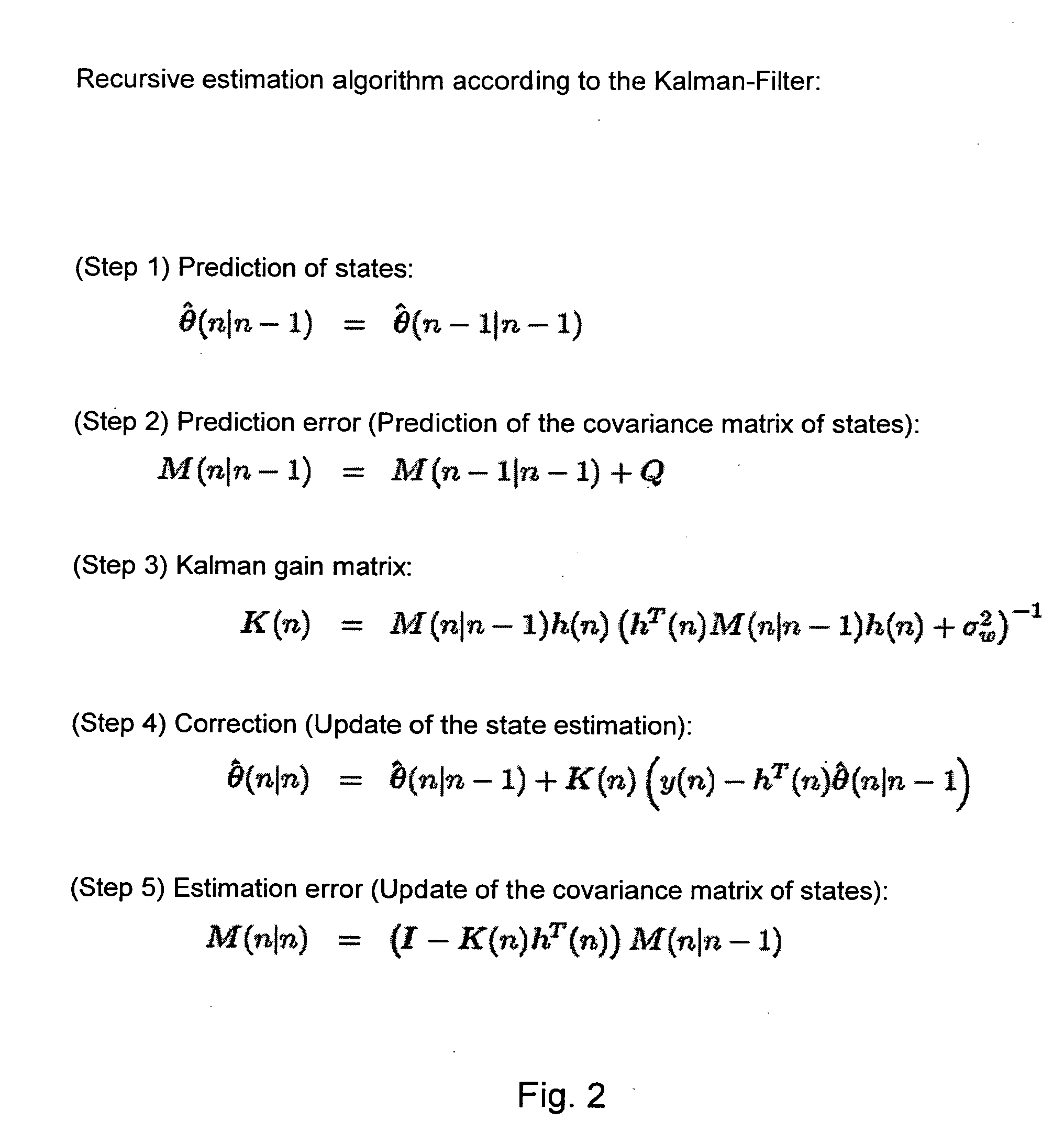Subtractive cancellation of harmonic noise
a harmonic noise and subtractive technology, applied in the field of noise suppression, can solve the problems of not being able to cleanly separate two sinusoids, one representing noise and the other representing useful information, and affecting the accuracy of estimation, so as to speed up the kalman filter adaptation and improve the accuracy of estimation.
- Summary
- Abstract
- Description
- Claims
- Application Information
AI Technical Summary
Benefits of technology
Problems solved by technology
Method used
Image
Examples
Embodiment Construction
[0024] One embodiment of the present invention provides a method for canceling additive sinusoidal disturbances with unknown frequencies in a signal of interest. One embodiment of the present invention applies to enhancing audio signals. Another embodiment of the present invention is applied to signals of a pressure sensor.
[0025]FIG. 1 shows a technique for elimination of a noise from a disturbed signal by adding a reference signal according to one embodiment of the present invention. As shown in FIG. 1, a method according to one embodiment of the present invention estimates 2 and tracks one or more parameters for each interference, such as the following parameters: in-phase amplitude, quadrature amplitude and frequency. According to one embodiment, the estimation is performed recursively by an Extended Kalman-Filter. According to a further embodiment, on the basis of one or more estimated parameters 3, such as the three above parameters, a reference signal 5 is generated 4 and sub...
PUM
 Login to View More
Login to View More Abstract
Description
Claims
Application Information
 Login to View More
Login to View More - R&D
- Intellectual Property
- Life Sciences
- Materials
- Tech Scout
- Unparalleled Data Quality
- Higher Quality Content
- 60% Fewer Hallucinations
Browse by: Latest US Patents, China's latest patents, Technical Efficacy Thesaurus, Application Domain, Technology Topic, Popular Technical Reports.
© 2025 PatSnap. All rights reserved.Legal|Privacy policy|Modern Slavery Act Transparency Statement|Sitemap|About US| Contact US: help@patsnap.com



